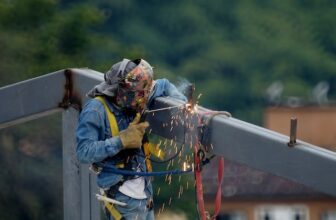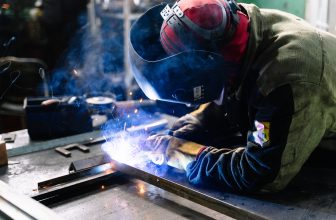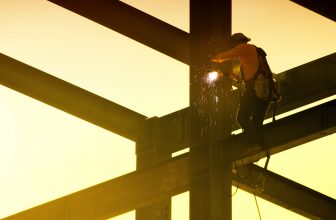Welding is an essential process in many industries, from manufacturing to construction. It involves combining two or more metals or thermoplastics using heat, pressure, or both. However, not all welding methods are created equal. Welding with argon gas is a particularly effective method that offers a range of benefits.
What is Argon Gas?
Argon is a colorless, odorless, and non-flammable gas that makes up about 1% of the Earth’s atmosphere. It’s a noble gas, which means it doesn’t readily react with other elements.
Argon gas is used in welding because it has a high thermal conductivity, which means it’s excellent at dissipating heat. When used in welding, argon gas acts as a shielding gas, which helps protect the weld from atmospheric contamination. This is particularly important when welding metals like aluminum, stainless steel, and titanium, which are susceptible to oxidation and other forms of contamination during welding.
Argon gas is typically used in two types of welding:
Gas Tungsten Arc Welding (GTAW), also known as Tungsten Inert Gas (TIG welding chart) welding, which involves using a tungsten electrode to create an arc that melts the metal and fuses it.
Gas Metal Arc Welding (More about GMAW), also known as Metal Inert Gas (MIG welding guide) welding, which involves using a wire electrode that feeds into the weld pool and creates an arc.
Argon gas blends for welding
The most commonly used standard for GTAW is 99.996% pure argon gas, which offers a high level of efficiency for this type of welding. However, for GMAW projects, a blend of 75% argon and 25% carbon dioxide is often used to produce a hotter weld puddle and deeper penetration of the weld.
While this blend is avoided for GTAW because carbon dioxide can cause oxidation around the tungsten electrode, it is a popular choice for GMAW.
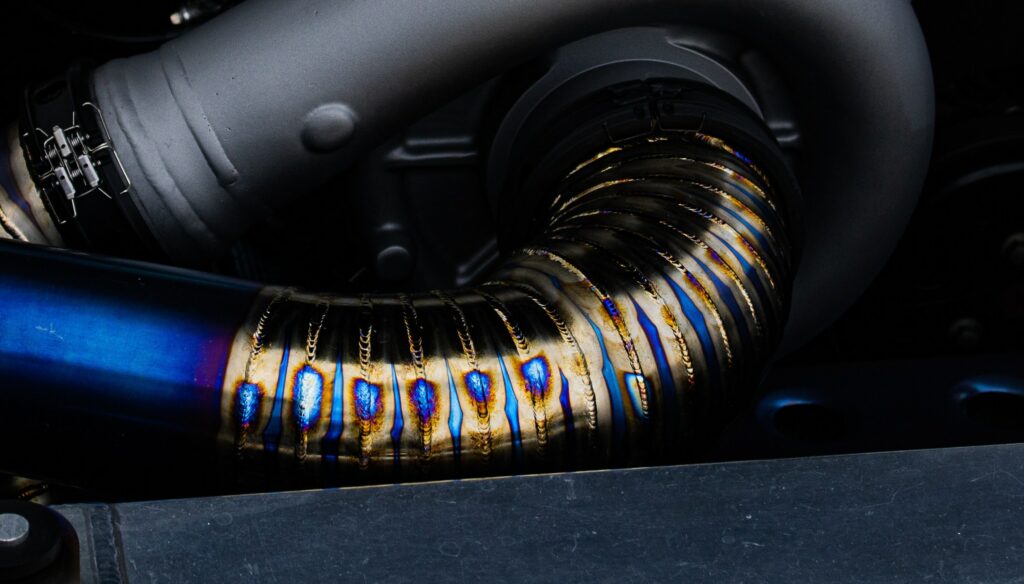
Another blend that is sometimes used in both GMAW and GTAW welding is 75% argon and 25% helium, which can be particularly useful in industrial settings. While less common than other blends, this mixture can provide unique benefits depending on the specific welding project at hand.
Argon blend for MIG welding steel
When MIG welding steel, a gas blend of carbon dioxide and argon is often used. This blend, usually containing 5-25% carbon dioxide, provides a more fluid puddle and better penetration compared to using 100% argon. It also helps eliminate undercutting and reduces spatter. In addition, the heating and cooling of the weld are better controlled, improving its resistance to bending and twisting.
When purchasing an argon/CO2 blend, the label indicates the amount of CO2 added to the argon. For example, a gas blend labeled “C25” contains 25% CO2 and 75% argon.
Tri-mix shielding gas can be used to further enhance the welding process. This gas blend typically contains 90% helium, 7.5% argon, and 2.5% CO2 and is known to produce the best welds on stainless steel. However, it can be costly and may not be readily available for hobbyist welders. Despite this, for high-quality welds on stainless steel, it may be worth the investment to obtain a tri-mix blend.
Advantages of Welding with Argon Gas
Welding with argon gas has several advantages over other welding methods, including:
- Improved Weld Quality
Argon gas acts as a shielding gas during welding, which helps protect the weld from atmospheric contamination. This results in a cleaner and higher-quality weld. Welds made with argon gas are also less likely to develop defects like porosity, weakening the weld and leading to failure. - Better Control of Heat Input
Argon gas has a high thermal conductivity, which means it’s excellent at dissipating heat. This allows welders to have better control over the heat input during welding. With better control of the heat input, welders can create stronger and more precise welds. - Versatility
Argon gas can be used in both TIG and MIG welding, making it a versatile option for welding different types of metals. It’s particularly effective when welding metals like aluminum, stainless steel, and titanium, which are susceptible to oxidation and other forms of contamination during welding. - Cost-Effective
While argon gas can be more expensive than other shielding gases, it’s often more cost-effective in the long run. This is because welds made with argon gas are less likely to fail, which can save time and money on repairs and replacements.
How to Use Argon Gas for Welding
Using argon gas for welding is a fairly straightforward process, but it’s important to follow proper safety procedures and welding techniques to ensure the best results. Here’s a step-by-step guide to using argon gas for welding:
- Choose the Right Welding Process
As mentioned earlier, argon gas can be used in both TIG and MIG welding. The choice of welding process will depend on the type of metal you’re welding and the thickness of the metal. - Set Up Your Welding Equipment
Make sure your welding equipment is properly set up and in good working condition. This includes your welding machine, torch, electrode, and gas supply. - Adjust Your Gas Flow Rate
The gas flow rate will depend on the type of welding you’re doing and the size of your weld. In general, you’ll want to set the flow rate between 10 and 30 cubic feet per hour (CFH) for TIG welding and between 20 and 40 CFH for MIG welding. - Weld Your Metal
Once your equipment is set up and your gas flow rate is adjusted, you’re ready to start welding. Remember to follow proper welding techniques, including maintaining a proper arc length, using the right welding speed, and keeping your welding area clean and free of contaminants. - Inspect Your Weld
After you’ve finished welding, inspect your weld for defects like porosity, cracks, or other types of damage. If you notice any defects, you may need to make adjustments to your welding technique or equipment.
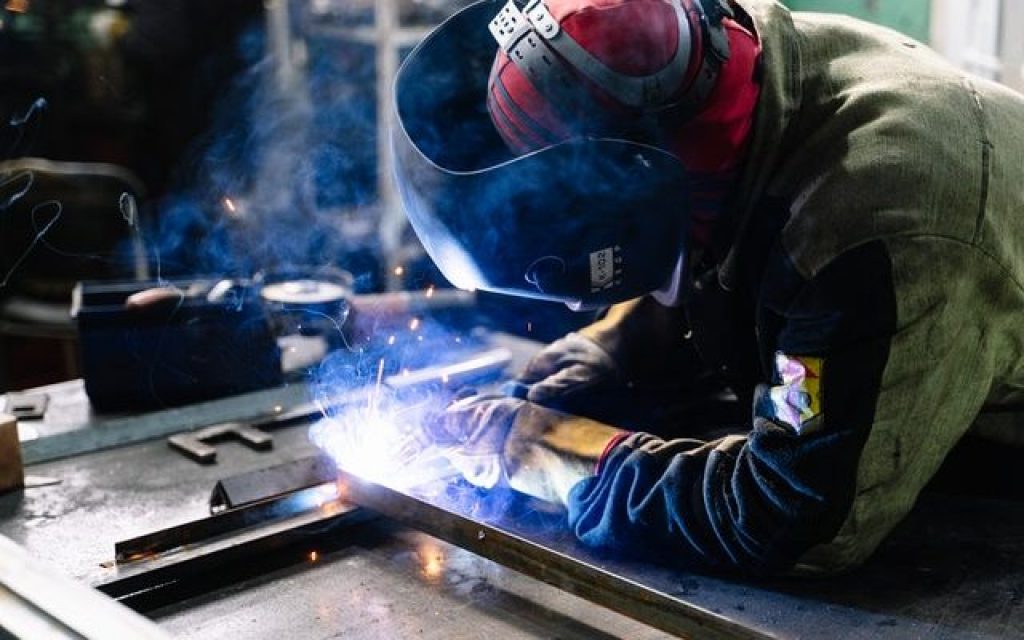
Safety Precautions When Using Argon Gas for Welding
While argon gas is generally considered safe for welding, there are still some safety precautions you should take to protect yourself and others. Here are some important safety precautions to keep in mind when using argon gas for welding:
- Proper Ventilation
Argon gas is heavier than air and can displace oxygen, leading to an increased risk of suffocation. Always use your welding equipment in a well-ventilated area to prevent the buildup of argon gas and ensure proper oxygen levels. - Use Proper Protective Gear
Welding can be dangerous, so it’s important to use proper protective gear to avoid burns, eye damage, and other injuries. This includes wearing welding gloves, a welding helmet with a shaded lens, and protective clothing like a welding jacket or apron. - Store Argon Gas Cylinders Safely
Argon gas cylinders should be stored in a cool, dry place away from sources of heat or ignition. They should also be properly secured to prevent tipping or falling. - Be Aware of Electrical Hazards
Welding involves working with electricity, which can be dangerous if proper safety precautions are not taken. Make sure you’re using properly grounded welding equipment and never touch any part of the welding equipment while standing in water or on a wet surface. - Read and Follow the Manufacturer’s Instructions
Always read and follow the manufacturer’s instructions for your welding equipment and argon gas cylinders. This will ensure you’re using the equipment safely and correctly.
In conclusion
Argon gas is a popular choice for welding due to its many benefits, including its ability to produce clean and high-quality welds. By understanding the properties of argon gas and how to use it effectively, you can take your welding skills to the next level and achieve even better results.
Remember to always follow safety precautions when using argon gas for welding and to choose the right gas mixture, keep your welding area clean, monitor your gas flow rate, choose the right welding technique, and practice regularly. By doing so, you can ensure a successful and enjoyable welding experience.




